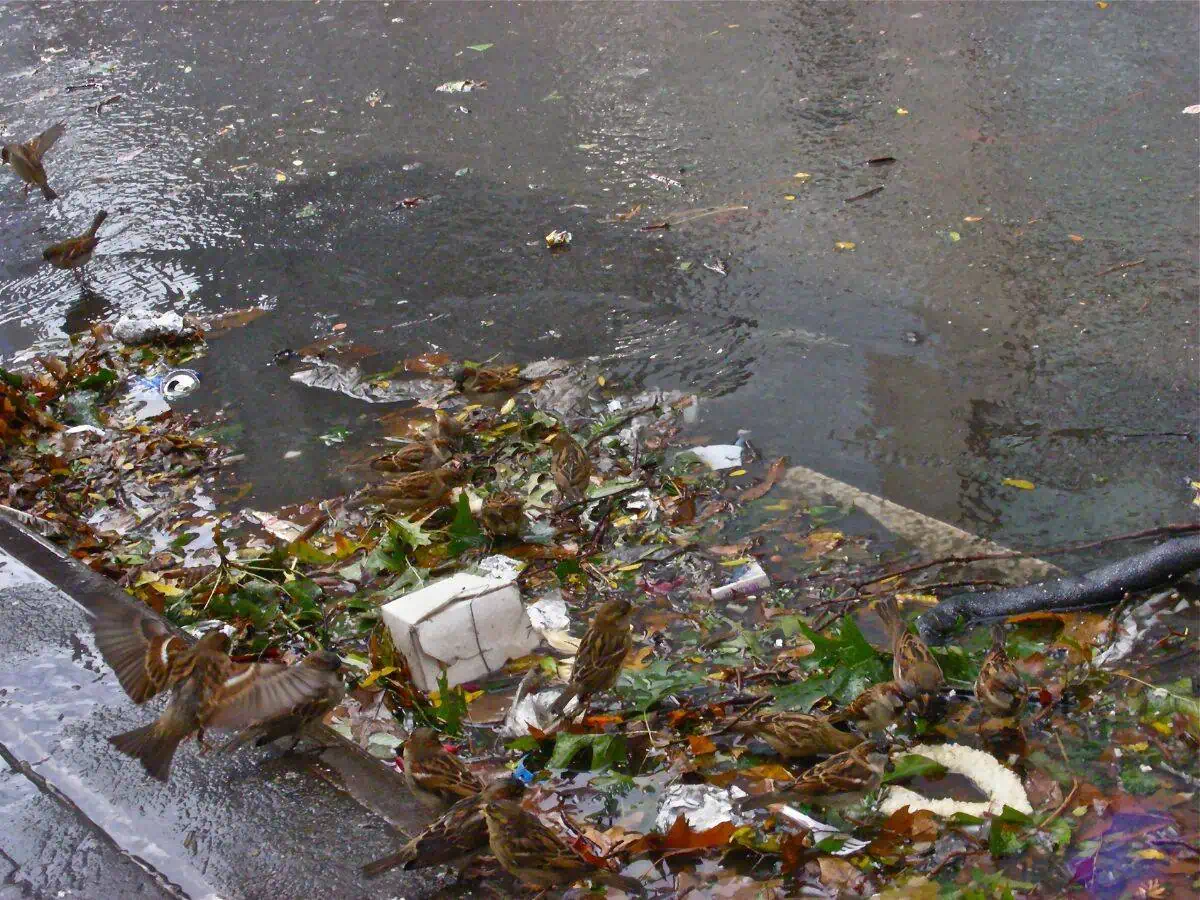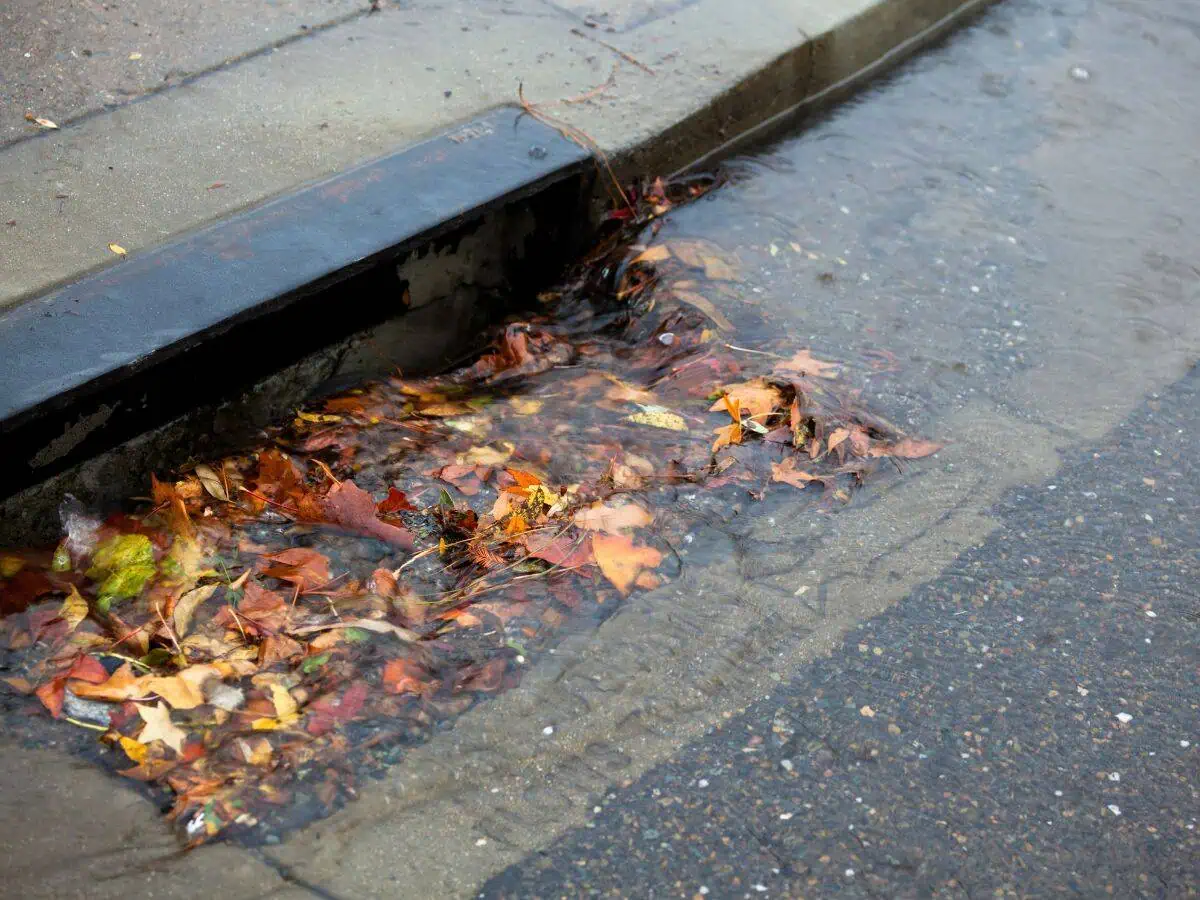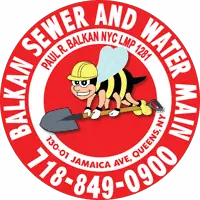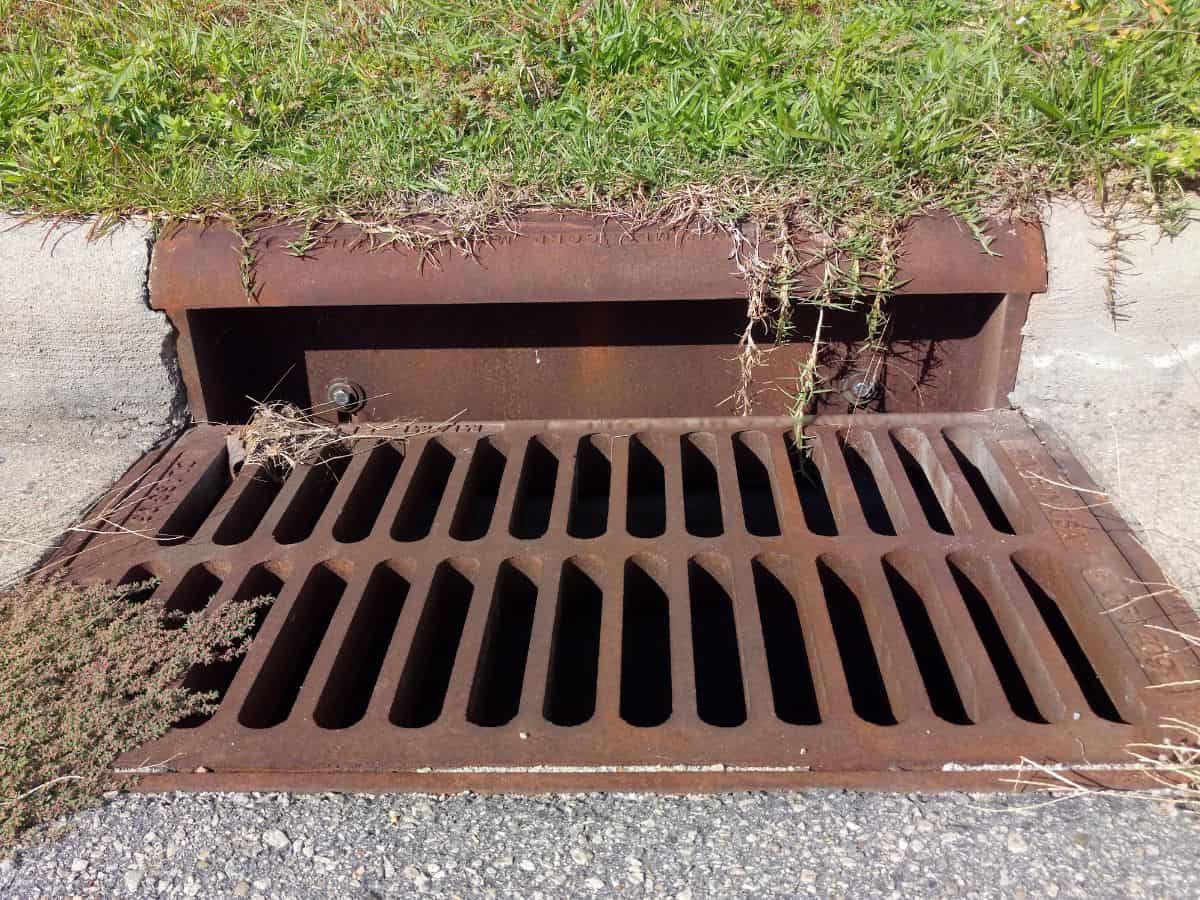When you think about what to do about sewer disasters in your home you may be asking: does keeping storm drains clean prevent sewer backups? The answer is yes – keeping storm drains clean drastically lowers the risk for sewer backups.
But to really understand what’s going on, we need to take a closer look at how these important systems interact with each other. If you’d like to take a deep dive into how storm drains work you can take a look at our blog post. and watch our video.
Link Between Clean Storm Drains and Sewer Backups
Most people don’t realize that storm drains do more than just deal with rainwater—they also keep our homes safe from sewer backups. You may question whether cleaning the storm drains actually makes a difference.
When storm drains are clogged with leaves, debris, or trash, the rainwater can’t flow (properly) into the storm water collection system and goes into the municipal sewer, which overloads your home storm sewer.
In worst-case scenarios, your home sewer is a combined storm and sanitary sewer, meaning any sewer backup will contain unsanitary wastewater.

How To Clean Storm Drains To Protect Your Home
Maintaining storm drains is an effective way to prevent sewer backups and their risks. When storm drains are clean, rain can go to where it needs to go instead of pooling in the roadways, yards, flooding a yard or basement, or going where it shouldn’t. Available storm drains, in some cases, relieve the pressure on the city’s sewer system, allowing it to function appropriately. This is true when storm drains are connected to dry wells or detention systems.
Furthermore, consistent efforts in maintenance can reduce debris from piling up, which, when redirected, may take the downstream route into your private home sewer or the public sewer system.
Signs Your Storm Drains Need Attention
Many homeowners overlook early indicators of storm drain issues. That puddle forming next to the curb after a light rain? This is not harmless water accumulation.
Standing water around storm drains is a sign that the drain could be clogged, and clogged storm drains cause serious headaches later. It can take the form of a flooded street or sidewalk, or dangerous slabs of ice in the winter.
Any time you spot a blocked public storm drain, it’s best to take a minute and report it to your local DEP. Usually there is a 311 system in place or its equivalent.

Residential plumbing systems communicate with us in several ways. Once you identify multiple fixtures in the home accumulating water, it is rarely coincidental.
That gurgle that comes from the toilet or kitchen sink? Imagine that as your pipes sending an alert. It is air trapped in the system and it usually indicates that proper flow is being blocked.
When it comes to odd odors, consider it a red flag.
If you notice a sewage odor coming from your drains, it’s safe to say that some cause for concern may be happening underground. The American Society of Civil Engineers noticed that most of these indicators appear weeks prior to major sewer or drain backup events. Their research revealed that homeowners who took action because of the early warning indicators spent less on repairs than homeowners who waited until their emergency occurred. This is not to mention the potential loss of personal property and the cost of mold and bacterial remediation.
Consider your neighbors, too. If it seems like multiple houses on your street are experiencing similar issues, it’s likely that there is a system-wide issue with the public sewer system. When a house experiences a backup, it’s often a foreshadowing for adjacent homes as well.
Also, keep an eye out for patches of grass that are unusually lush over sewer lines- it could mean that the leaks are sending additional water and nutrients to those areas of your lawn. Likewise, keep an eye out for pooling water that is not a result of a recent rainfall. Pooling water can be more than an convenience, it can be a health hazard.
Storm Drain Maintenance
Regular inspection matters most. Professional cleaning services provide deeper maintenance. Using specialized equipment, they clear blockages that homeowners can’t reach. Annual professional cleaning reduces backup risks by 75%, according to industry data. However, in most cases, simply clearing off drain grates, drain sump pits, making sure sump pumps are functional, leaders, and gutters can prevent most issues.
When Clean Storm Drains Aren’t Enough
While clean storm drains prevent most backups, additional protection helps. Backwater valves offer an important secondary defense. These devices prevent sewage from flowing backward into homes, even during severe system overloads.
Does making sure storm drains are clean stop sewer backup? It’s the first step, but complete protection requires a comprehensive approach. Consider these additional measures:
- Regular sewer lateral inspections
- Installation of backup prevention devices
- Professional maintenance schedules
- System upgrades when needed
Emergency Response When Prevention Fails
Despite best efforts, backups sometimes occur. Quick response prevents extensive damage.
If you experience a backup:
- Stop using water immediately
- Document visible damage
- Contact professional services
- Avoid contaminated areas
Long-Term Prevention Strategies
Does making sure storm drains are clean stop sewer backup? Yes, especially when combined with long-term prevention planning. Develop comprehensive maintenance schedules based on the following:
- Local rainfall patterns
- System age and condition
- Property location
- Historical problem areas
Modern technology enhances prevention efforts. Smart sensors and sewer alarms detect potential blockages early. Updated pipe materials resist root intrusion. These improvements, combined with clean storm drains, can reduce backup incidents by 80%.
Understanding Municipal Responsibilities
Storm drain maintenance involves both homeowners and local governments. While municipalities maintain main lines, property owners often are responsible for nearby storm drains and connecting pipes.
Does making sure storm drains are clean stop sewer backup? Municipal data shows areas with active resident participation in drain maintenance report 65% fewer backup incidents.
Cost Benefits of Prevention
Prevention costs far less than cleanup. The average sewer backup causes $4,000 to $10,000 in damage. Regular storm drain maintenance typically costs less than $200 annually. Simple math demonstrates the value of prevention.
Taking Action: Your Protection Plan
Based on comprehensive data, having a clean storm drain significantly reduces sewer backup risks. Implement these protective measures:
- Schedule regular drain inspections
- Remove visible debris promptly
- Install protective devices
- Maintain detailed maintenance records
- Know emergency contact numbers
Conclusion: The Power of Prevention
Does making sure storm drains are clean stop sewer backup? Evidence clearly shows it does. Clean storm drains form the foundation of effective backup prevention. Combined with proper maintenance and protective devices, they significantly reduce your risk of experiencing this costly and unpleasant problem.
Remember: prevention through regular maintenance costs far less than emergency cleanup. Keep those storm drains clean, stay alert for warning signs, and address small problems before they become major disasters.






